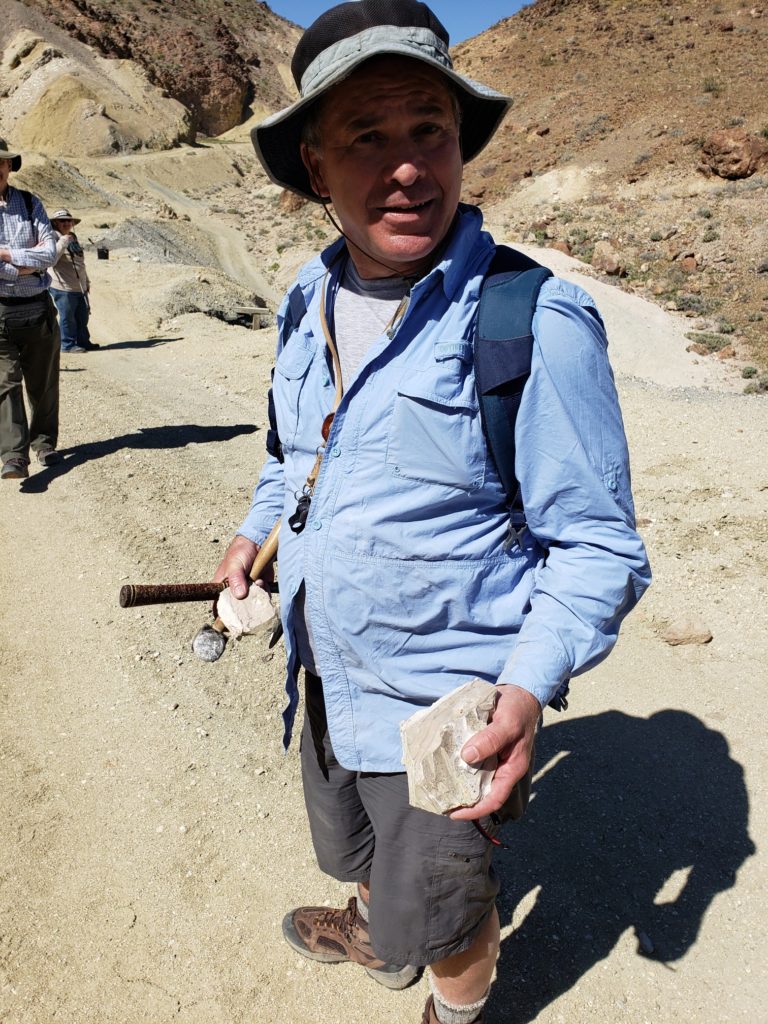On a beautiful Saturday morning, the group met at 9:00 AM at the Calico Rd and Calico Blvd intersection, just north of the I-15 freeway Yermo exit, 10 miles east of Barstow. We had the highest turnout for the fieldtrip in the last 15 months. Our current MSSC president George Rossmann joined us with Caltech student Allyson. Also, we had two past presidents: Robert Pedersen from Arizona and Bob Housley from Pasadena. Many guests from Southern California Friends of Mineralogy joined us too.
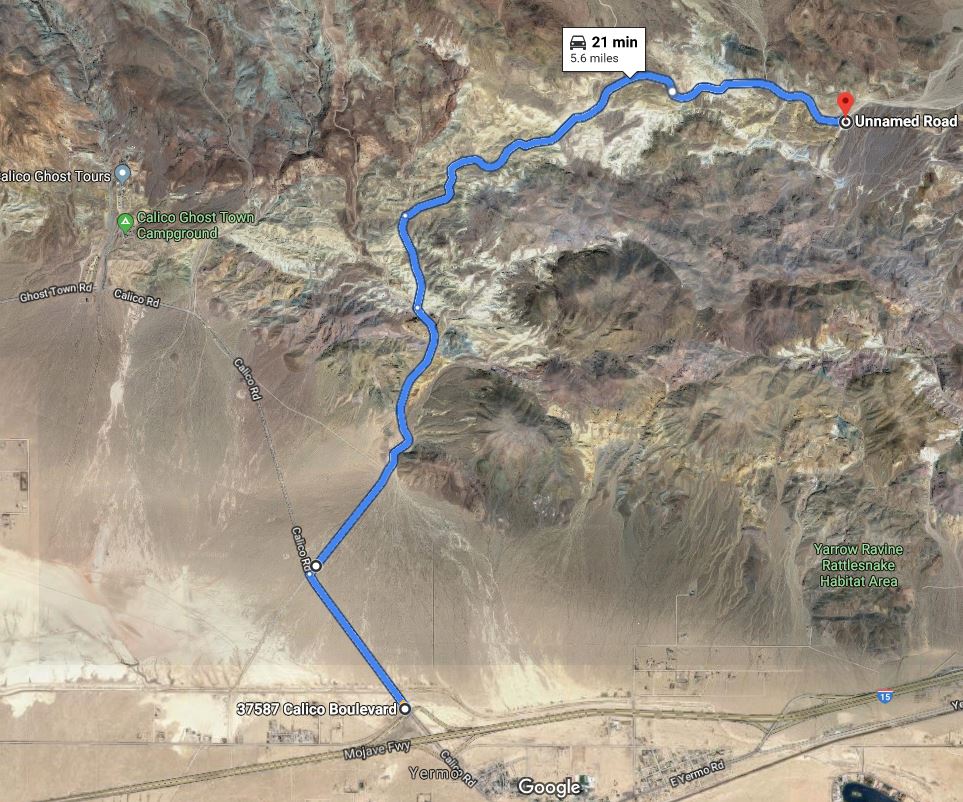
The destination for the trip was the Borate mining town area. The borate minerals were discovered in the Calico Mts in 1882. After consolidating early claims and changing ownership to Francis Marion “Borax” Smith the mine started producing in 1892. When the mine shut down in 1907 all buildings and railroad trestles were moved to the Death Valley area. For anybody interested in more history I’ve included two links to great historical write-ups with old photographs.
The first one is from Desert Symposium 1999 by Bob Reynolds: http://www.desertsymposium.org/DS_1999_A_Walk_Through_Borate.pdf Thanks to Bob Housley for pointing it out. The second one is by a good historian, Delmer Ross, with more focus on the narrow-gauge railroad: http://www.ttrr.org/bd_text/bdrh_001.html
To get to the Pacific Coast Borax mine dumps we headed north on Calico Rd for a while, before turning into Mule Canyon dirt road and continue driving thru the canyon for 5.6 miles total. The dirt road is well maintained for a few miles if bumpy in places, but closer to the mine there are deeper sandy ruts, so low clearance vehicles are not advisable. The Mule Canyon Rd leading to the mine was an excellent driving adventure in itself. We saw many campers and shooters on the way.

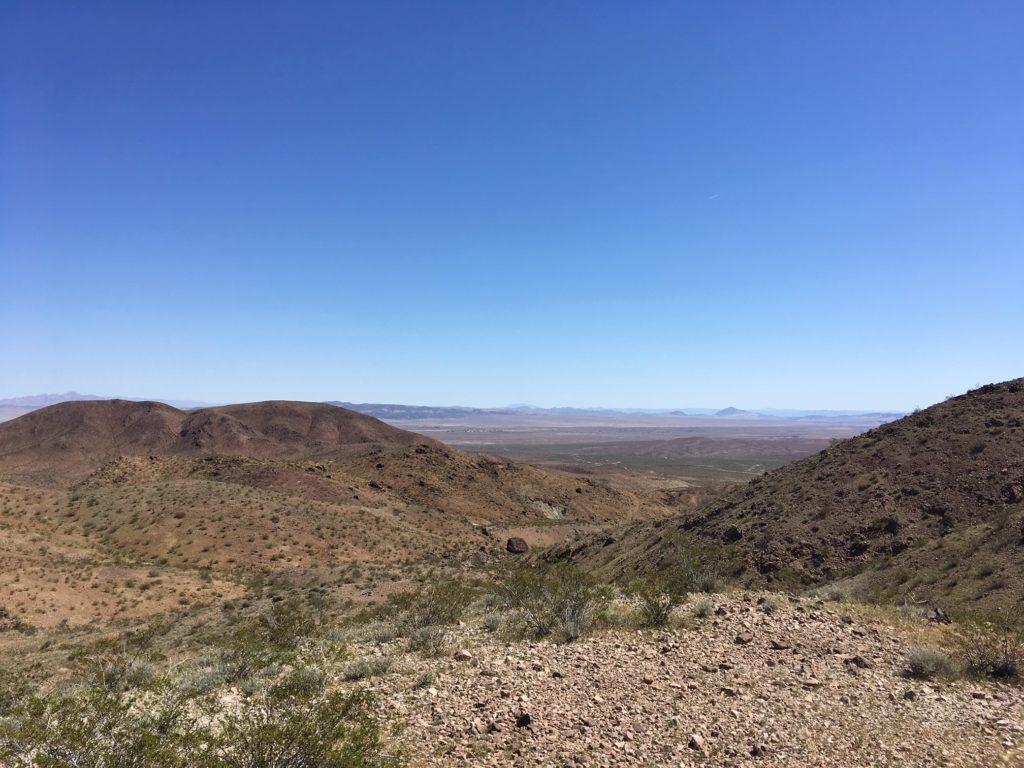
We parked at the side of Mule Cyn Rd and walked for a ½ mile to the mine dumps. The canyon leading to the mine shows incredibly folded rocks, highly appreciated not only by the geologists among the attendance.


The area is pervasive, so several hours were necessary to explore it fully. We first collected at the main dump area then continued to the east dumps which proved more productive.

On the way, we’ve seen hundreds of caterpillars heading down the mine road looking for a right place to anchor and turn into a chrysalis. Mostly smaller and hairy ones, but there were exceptions too.

We’ve encountered beetles adapted to light colored rock environment with the top of the hard exoskeleton emulating the limestone color and texture.

The western dump area provided much more rock-breaking fun and better material for everybody.
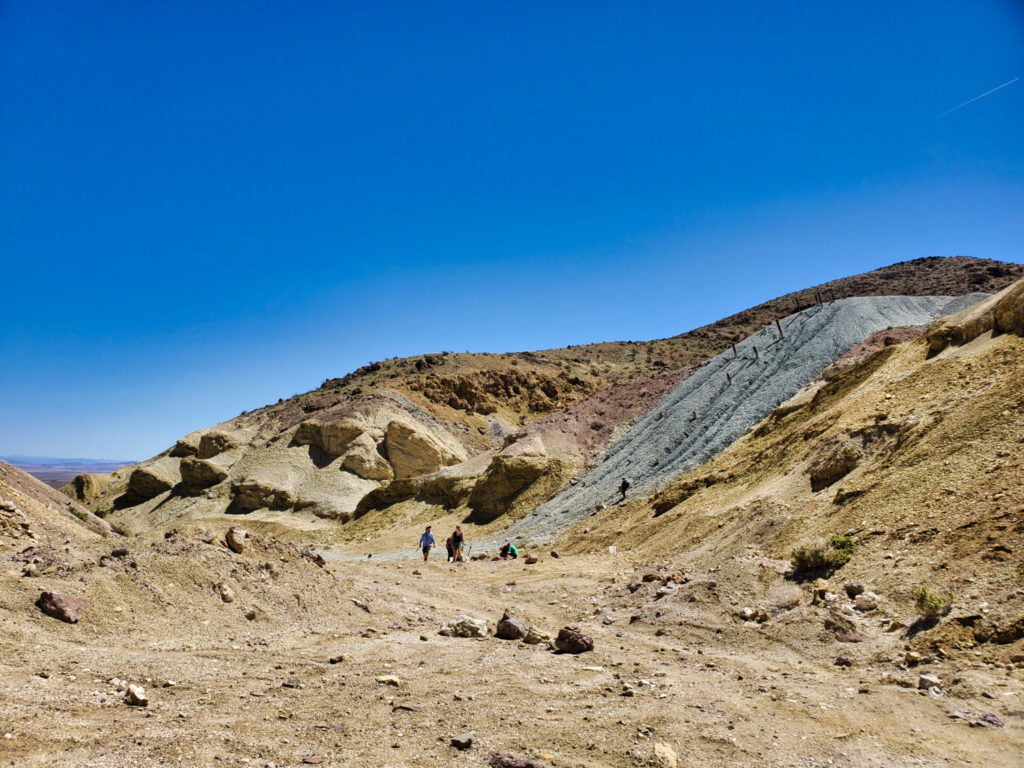
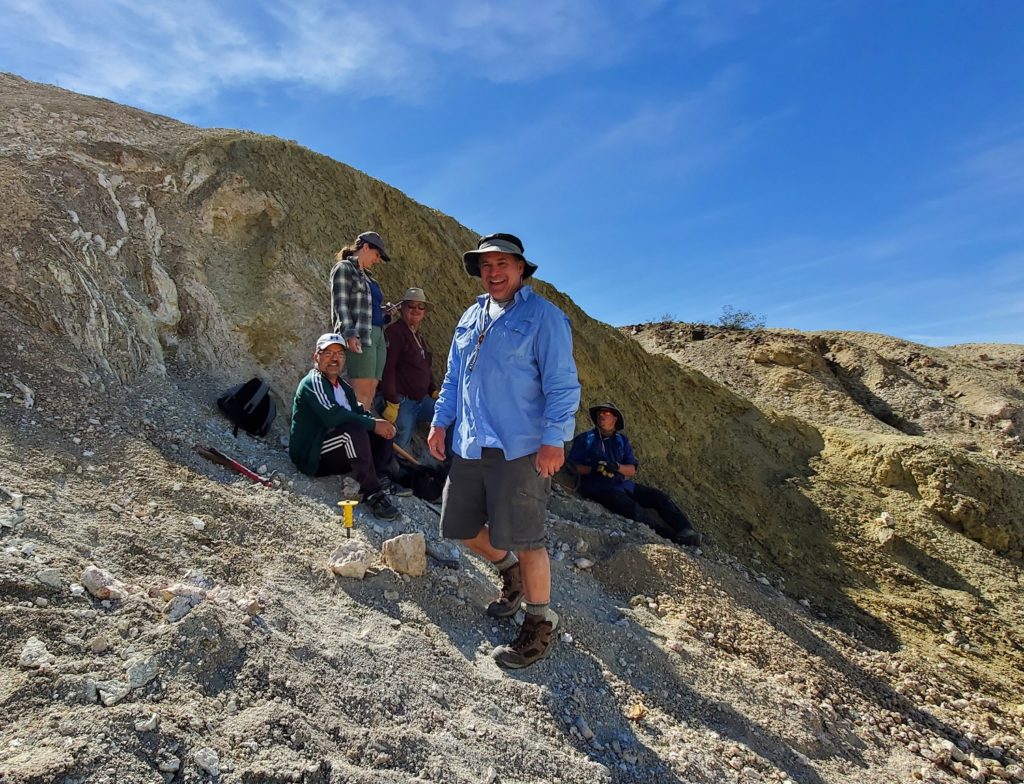
We collected large gypsum crystals, beautiful celestine crystals, and colemanite geodes at the Pacific Coast Borax mine. Many participants also found round cauliflower shaped howlite nodules, massive jarosite, and spherical concretions sometimes encapsulating stinky organic oils. There are also some fossils in the shale in the area, but nobody reported finding any.





One of the rocks was full of tufts of celestine needles, and many people got smaller pieces when Matt broke it up into chunks. Some of the needles are thin transparent blades, some of them have a tapering habit, broader at the end.


The material is highly fluorescent in short wave ultraviolet light. Colemanite fluoresces white and calcite from yellow to dark orange. Below are some examples of the UV response.

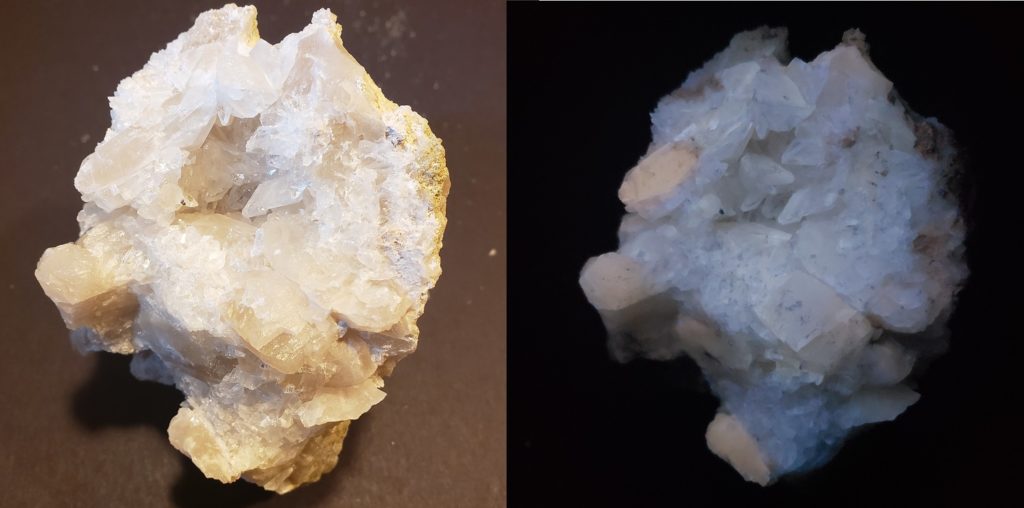

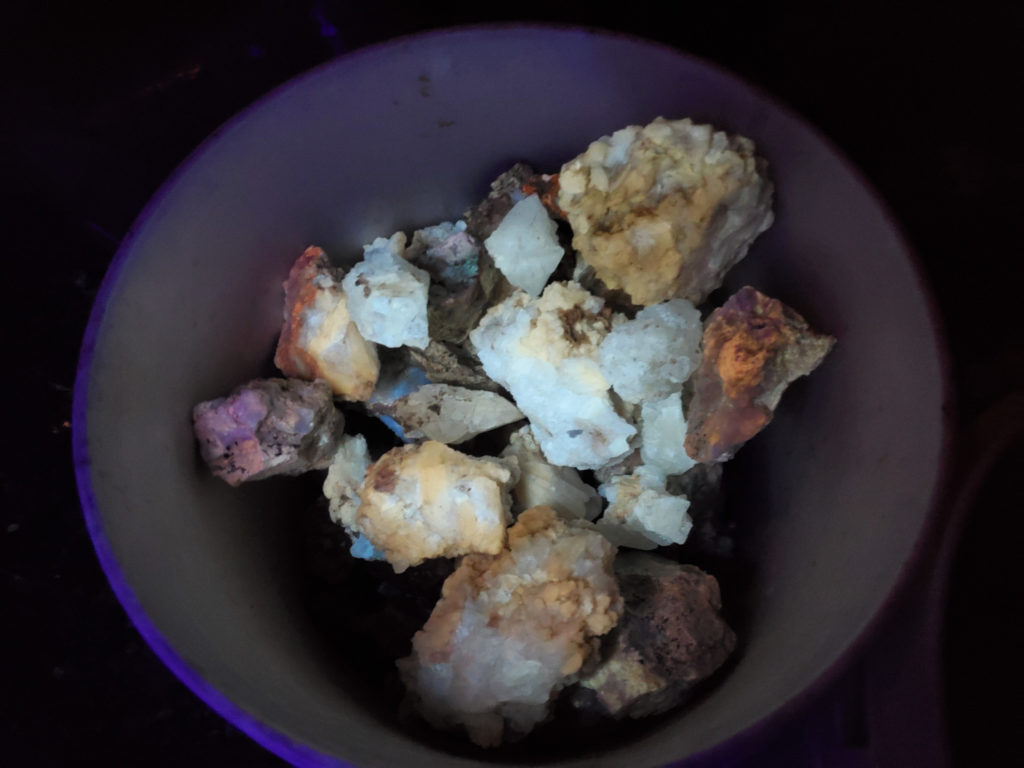
Little Borate Canyon post-trip
After getting back to the cars in the afternoon, we met with Steve Scott who took some of us (thank you !!!) to the colemanite vein in Little Borate Canyon a mile west from the primary location. We found great colemanite and some long prismatic celestine crystals as well.


Sulfur Hole post-trip
The Caltech troops went to Sulfur Hole to search for rare iron sulfates, just around the corner from the Big Borate Canyon. I doubled back to that area too after the visit to the Little Borate Canyon, but everybody already left by then.
The hole was filled in by rock debris accumulated over the years from the layers above. It looked more like a mound, so instead the minerals were collected at the hydrothermal chimney, directly above the hole’s original location.

The minerals collected there were sparkly jarosite crystals, ranging from yellow honey color to dark brown, up to 0.5 mm in size. The crumble matrix in the chimney also yielded beautiful bright pale yellow crystals of native sulfur, some flowy, some sharp euhedral up to 1 mm in size. Under the microscope, the matrix revealed some micro dark red tabular crystals, also verified as sulfur with the help of Raman spectroscope at Caltech lab.

The fractures in the matrix yielded some more interesting minerals. Greasy yellow to olive flat bunches of thin sparkly platelets turned out to be copiapite, a rare hydrated iron sulfate. Microscopic bright yellow blobs got verified as metavoltine, another rare iron sulfate.
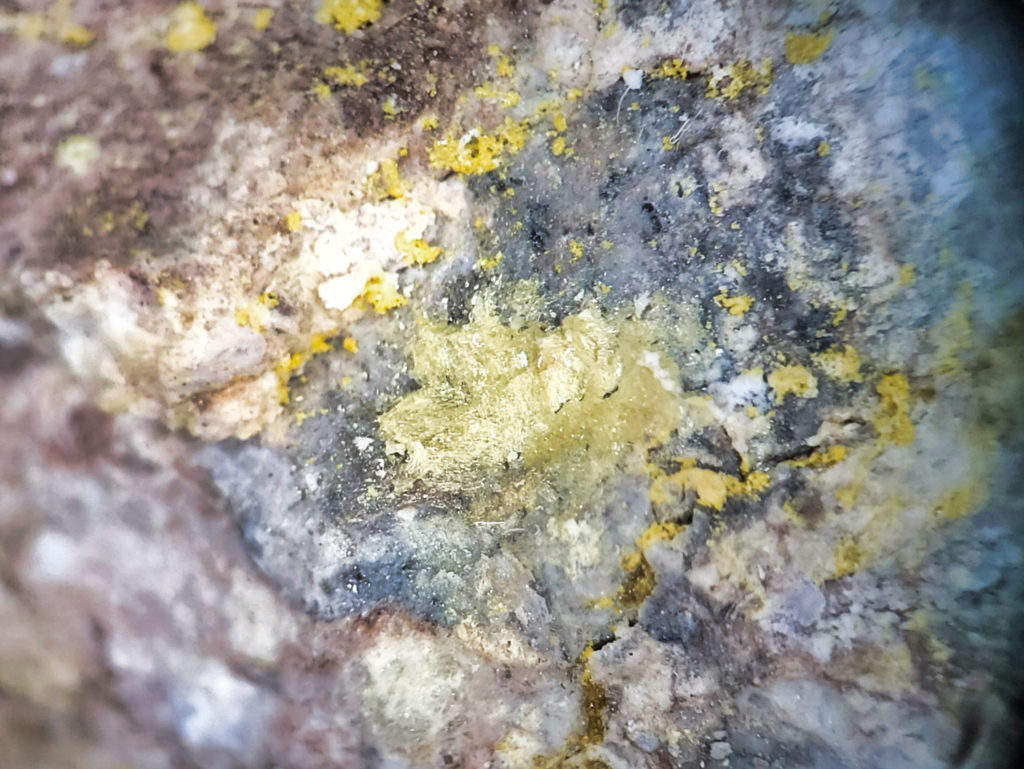

The biggest discovery of the day, however, was an earthy gray-blue layer of a mineral, that did not fit in easily into the known Sulfur Hole assemblage. Several pieces were collected separately by Bob Housley and me. The Raman spectrum matched scorodite, a hydrated iron arsenate. It is the first arsenate mineral occurrence ever reported from the Sulfur Hole, proving that arsenic was also present in the hydrothermal event(s), which deposited this very rich iron sulfate deposit.
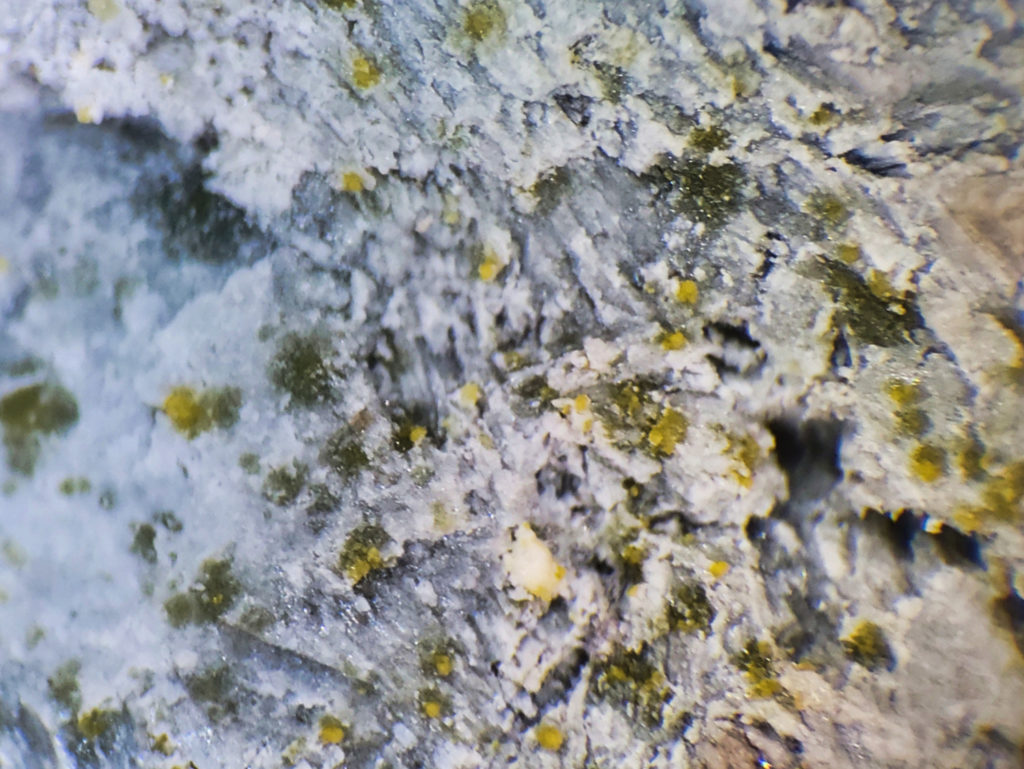
Thanks to everybody who attended the April trip, and special thanks to the Caltech for the continuous support of mineral identification! Also big thank you to those who sent their trip pictures and mineral photos!
Hope to see you next time!
MarekC
Here is a gallery of photos for easier browsing:
